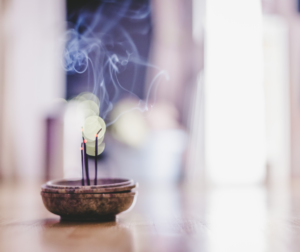
For thousands of years, Lapis Lazuli has captivated people with its deep blue, ultramarine colour, and mystical properties. Composed primarily of the mineral lazurite, this gemstone is often flecked with golden pyrite, which adds to its beauty. From ancient times to the present day, Lapis Lazuli has been known as the stone of royalty for both its aesthetic appeal and its perceived, mystical powers.
Early civilizations valued Lapis Lazuli for its rarity and beauty. Ancient Egyptians carved it into scarabs and other jewellery items, as well as used it in cosmetics and painting.
In the Middle Ages, Lapis Lazuli was ground into a powder and used as a pigment for ultramarine, the finest and most expensive of all blue pigments.

The word “ultramarine” comes from the Latin phrase “ultra-mare,” which means “beyond the sea.” This is because the pigment was originally derived from the precious stone Lapis Lazuli, which was primarily found in mines in Afghanistan and other areas beyond the Mediterranean.
The process of extracting ultramarine pigment from Lapis Lazuli was a long and complicated one that involved grinding the stone into a fine powder and then treating it with chemicals to remove impurities. This process was so labour-intensive and costly that ultramarine was considered one of the most expensive and valuable pigments of its time.
Due to its high cost, ultramarine was reserved for use in the most important and prestigious artworks. It was particularly favoured by artists of the Renaissance period, such as Michelangelo, Leonardo da Vinci, and Raphael, who used the pigment to create deep blue skies and clothing in their paintings.

Vincent van Gogh, the famed post-impressionist painter, is well-known for his use of vibrant and expressive colours in his artwork. He especially loved the deep blue colour of ultramarine, originally derived from crushed Lapis Lazuli.
Van Gogh was so fascinated by the intense blue hue of ultramarine, that he described it as “a beautiful blue sea, the waves of which fall one against the other in a very regular manner.” He used this colour in many of his paintings, including his famous works “The Starry Night” and “Irises.”
However, given Van Gogh’s financial struggles throughout his life, he often had to rely on cheaper alternatives or mixtures of other pigments to achieve a similar shade of blue, rather than the pigment derived from crushed Lapis Lazuli used by medieval artists.
Despite these challenges, Van Gogh’s innovative use of colour contributed to the evolution of post-impressionism and had a profound impact on the art world.
The ancient Chinese name for Lapis Lazuli is “zǐ shí”, which means “purple stone” or “blue stone”. It was highly valued in ancient China for its striking blue colour and was used in decorative objects, jewellery, and as a pigment for painting and calligraphy. Lapis Lazuli was also believed to have powerful healing properties and was used in traditional Chinese medicine. The stone was imported from Afghanistan and other parts of Central Asia along the ancient Silk Road and was highly prized by Chinese emperors, nobility, and artisans.
Lapis Lazuli was referred to as “the stone of heaven,” believing that its deep blue colour was obtained from the sky, signifying cosmic wisdom.
According to Chinese mythology, the goddess Nüwa was responsible for creating the world and all its inhabitants. It is said that she used Lapis Lazuli to create the sky and the earth.
The story goes that in the beginning, the world was dark and chaotic, with no form or structure. Nüwa decided to create order and balance in the world by separating the sky and the earth. To do this, she gathered pieces of Lapis Lazuli and melted them down to create pillars that she used to prop up the sky, which was believed to be a dome-shaped structure.
Nüwa then used the remaining Lapis Lazuli to fill in the gaps between the pillars, creating a solid foundation for the sky. She also used the stone to create rivers, lakes, and oceans, and it was believed that the deep blue colour of the water reflected the Lapis Lazuli that was used to create it.
In addition to its role in creating the world, Lapis Lazuli was also believed to have healing properties and was used as a talisman to ward off evil spirits. It was believed that the stone had the power to bring peace, enlightenment, and spiritual guidance to those who possessed it.
In feng shui, Lapis Lazuli is believed to have powerful healing and spiritual properties that can bring balance, harmony, and positive energy to a space.
Following are a few ways that Lapis Lazuli is used in feng shui:

More than just a beautiful gemstone. Lapis Lazuli is a stone of truth that can increase your self-awareness, creativity, and wisdom. It can be used as a meditation stone to help you connect with your higher self, helping you understand your own inner truth, knowledge, and purpose in life.
For these reasons, we love Lapis Lazuli as a companion to enhance spiritual growth and understanding.
